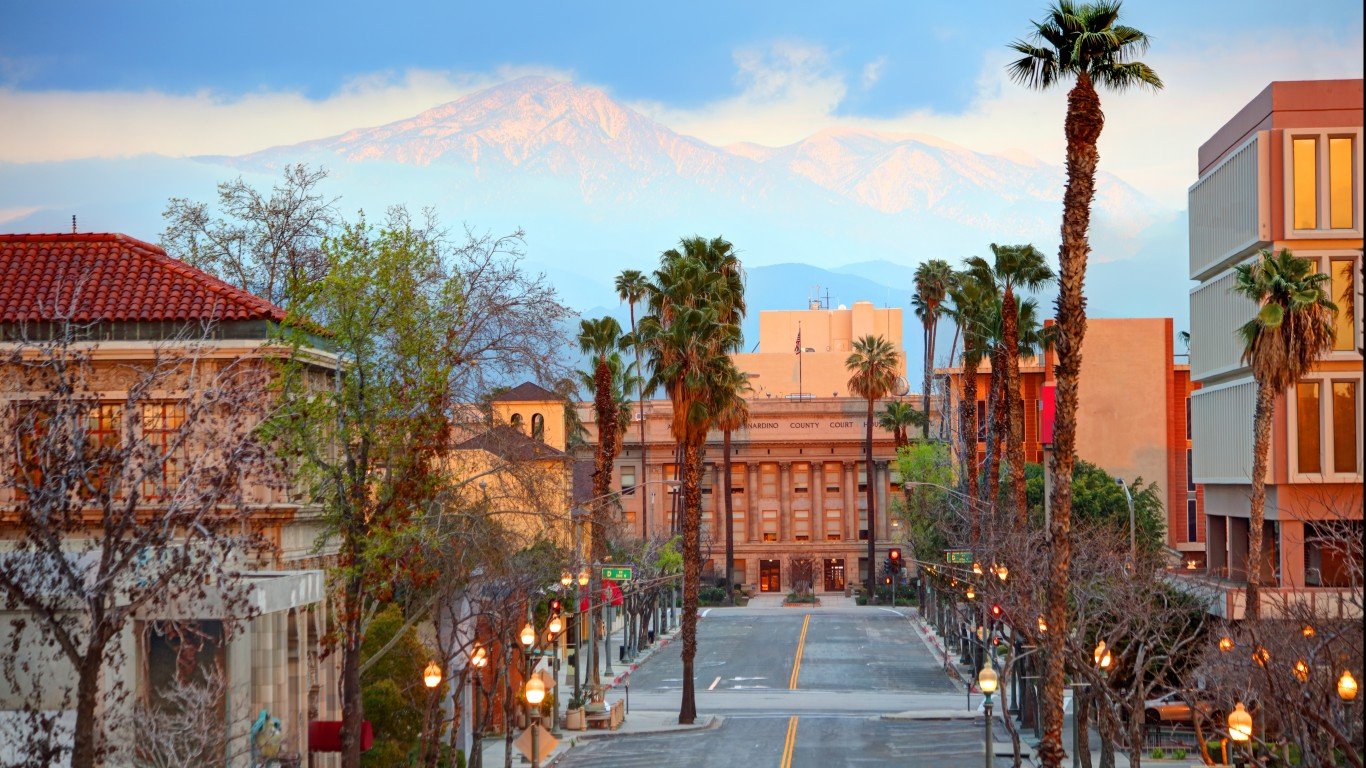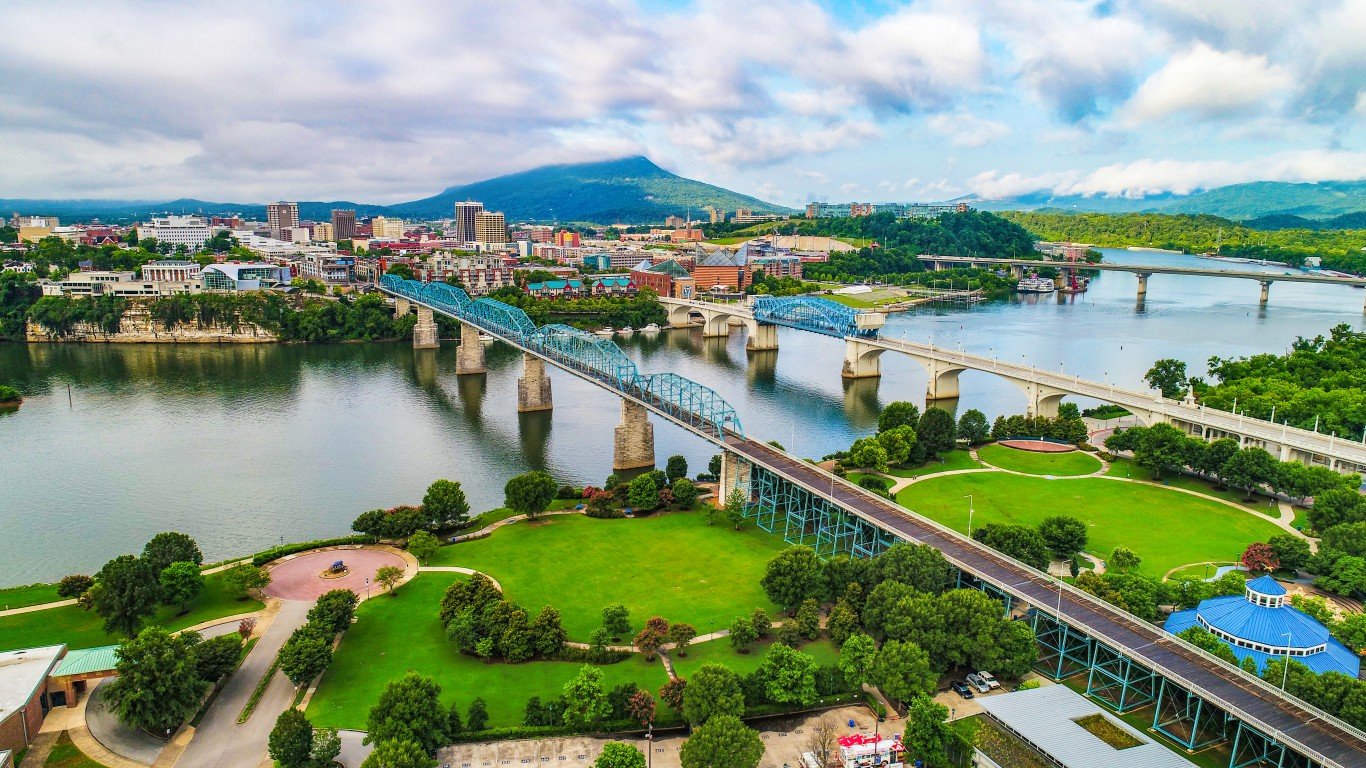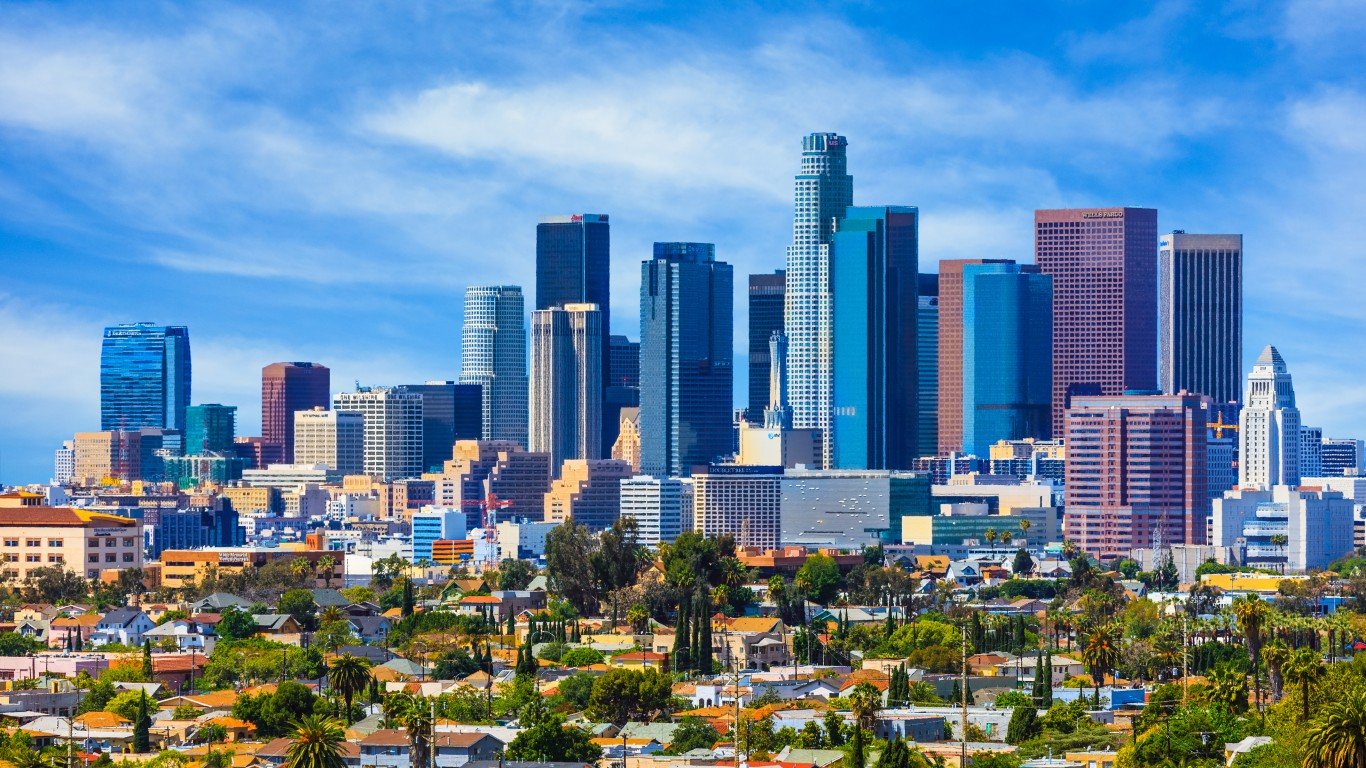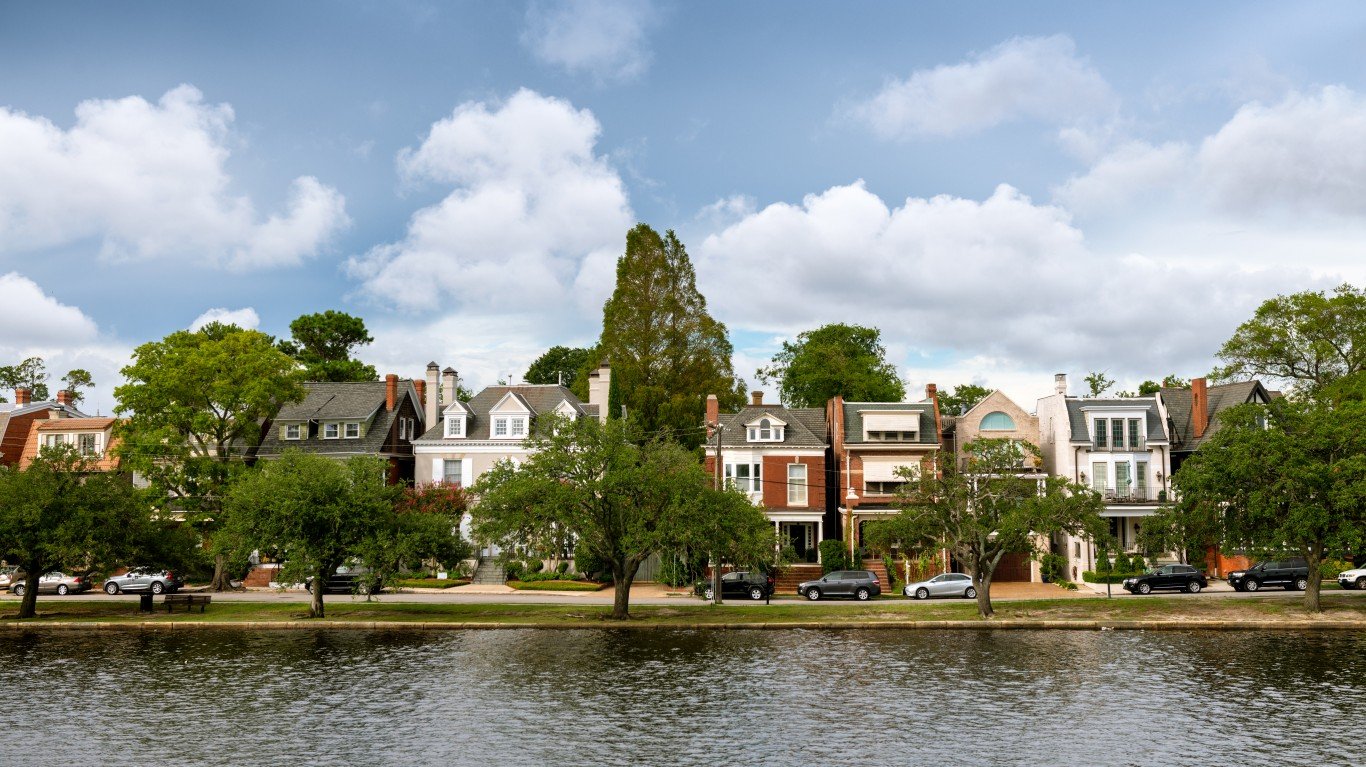
15. Scottsdale, Arizona
> City covered by hazardous waste areas: 6.1% (11.2 sq. mi.)
> Number of hazardous waste areas: 3
> Largest hazardous waste area: Indian Bend Wash Area
> Total population: 254,995
Before federal environmental regulations were implemented in the 1970s, numerous industrial facilities in the Indian Bend Wash area dumped industrial solvents directly onto the ground or in unprotected dry wells, leading to soil and groundwater contamination in two areas divided by the Salt River. The two areas are being treated separately because they are not connected, and the contaminants for each come from different sources.

14. San Bernardino, California
> City covered by hazardous waste areas: 6.5% (4.0 sq. mi.)
> Number of hazardous waste areas: 2
> Largest hazardous waste area: Norton Air Force Base (Landfill No. 2)
> Total population: 216,784
Since 1942, the area has served as an aircraft repair and jet engine maintenance site. Past management of hazardous materials caused soil and groundwater contamination with polychlorinated biphenyls (PCBs), lead and other heavy metals, acids, and dioxins. Operation, maintenance, and monitoring at the site is ongoing following the implementation of remedial actions at the site.

13. Chattanooga, Tennessee
> City covered by hazardous waste areas: 7.0% (10.6 sq. mi.)
> Number of hazardous waste areas: 3
> Largest hazardous waste area: Volunteer Army Ammunition Plant
> Total population: 181,370
Large amounts of TNT were produced at a now-inactive Volunteer Army Ammunition Plant. Contaminants found at the site include chemicals used in the production, pesticides, and heavy metals. The Agency of Toxic Substances and Disease Registry determined in 2004 that local residents were not exposed to contaminants from the site in levels that would cause harmful effects.

12. Los Angeles, California
> City covered by hazardous waste areas: 7.2% (35.9 sq. mi.)
> Number of hazardous waste areas: 7
> Largest hazardous waste area: San Fernando Valley (Area 3)
> Total population: 3,973,278
Area 3 of San Fernando Valley was contaminated by industries that dumped volatile organic compounds like the industrial solvents trichloroethylene and perchloroethylene. The EPA determined that no action was needed to clean up the site and removed it from its Superfund program’s National Priorities List in 2004.

11. Norfolk, Virginia
> City covered by hazardous waste areas: 10.0% (9.6 sq. mi.)
> Number of hazardous waste areas: 3
> Largest hazardous waste area: Norfolk Naval Base
> Total population: 244,300
Norfolk Naval Base provides facilities and logistics support for U.S. Navy vessels and aircraft. Shipyard activities have generated environmentally hazardous wastes, including solvents, paints, oils, and PCBs. Poor waste disposal practices in the past led to the site being registered to the EPA’s Superfund National Priorities List in 1997. Maintenance of the site is ongoing.





